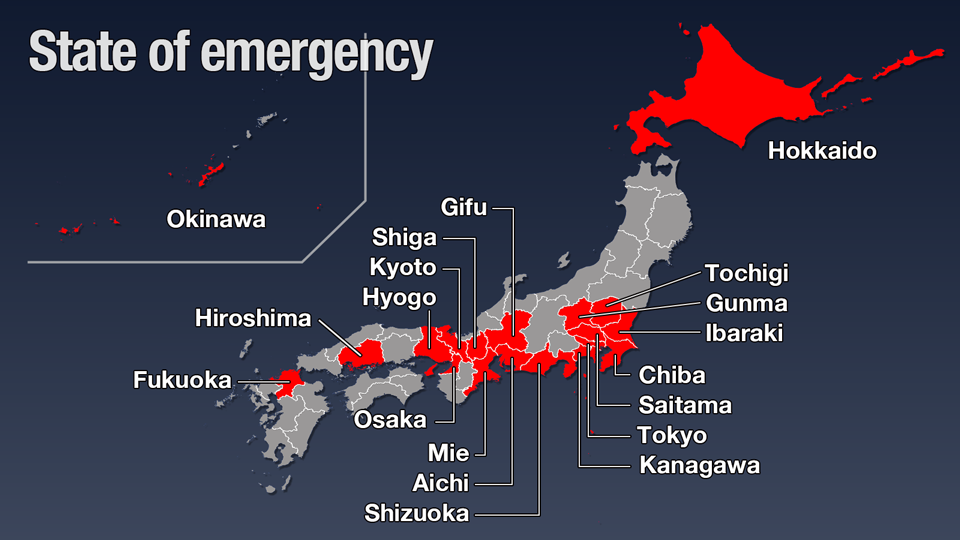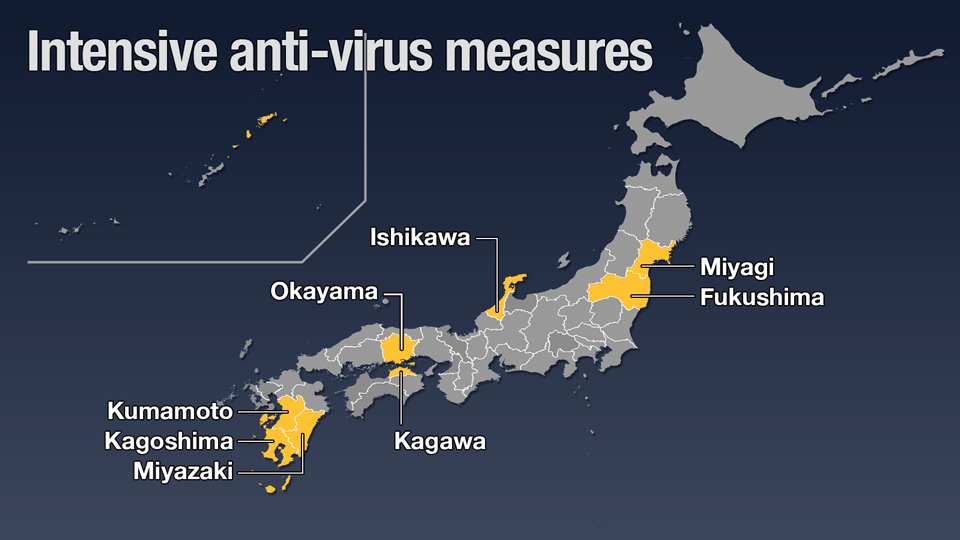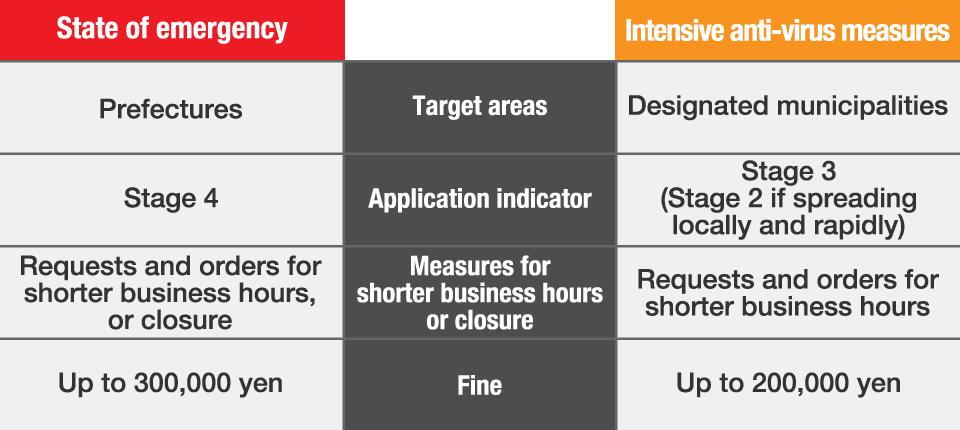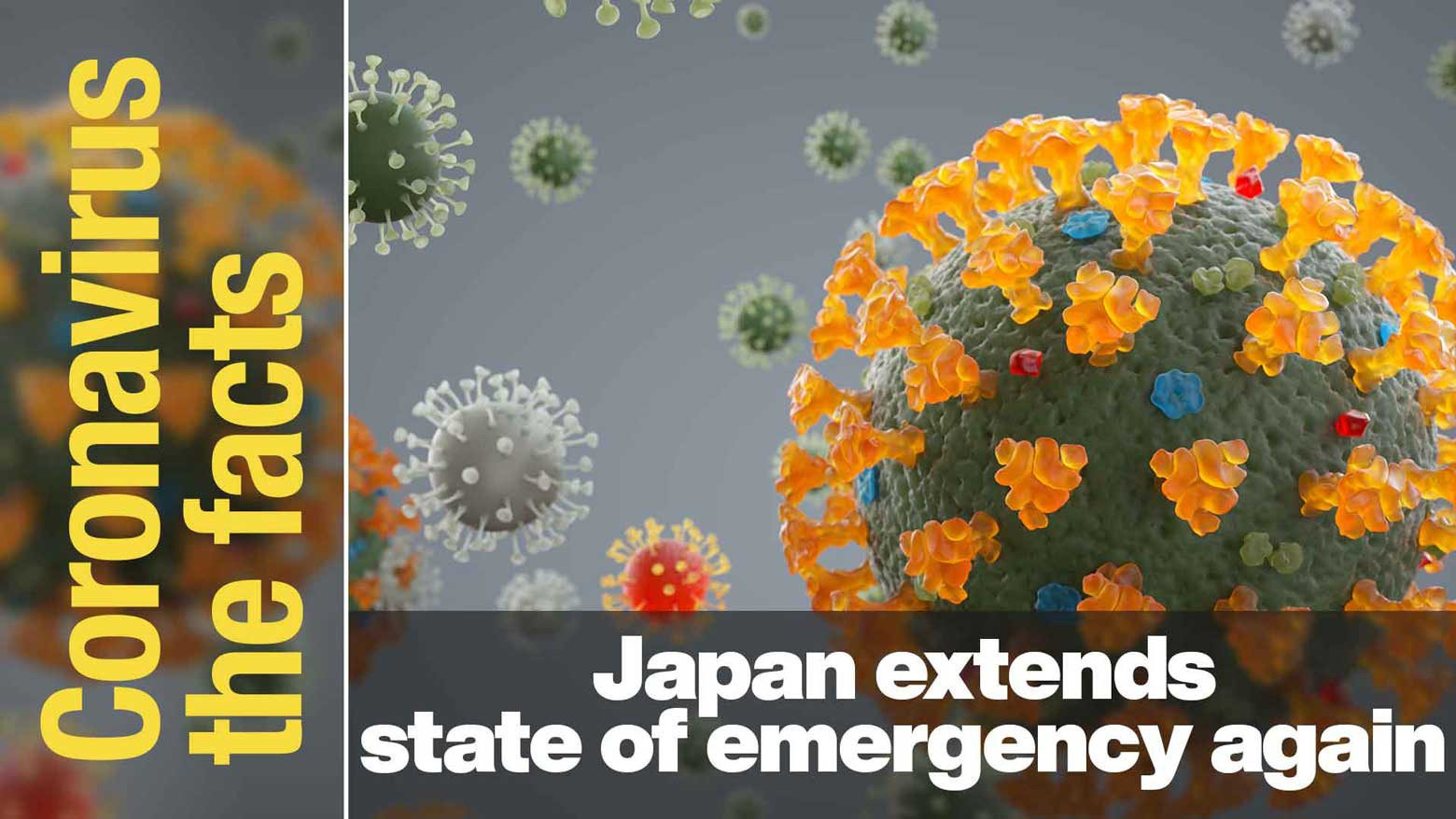This is our series on key coronavirus-related information. Click here to read other installments: #Coronavirus the facts. Find the latest information and answers from experts on everything COVID-19.
Measures to run through September 30
Japan’s government has extended its fourth state of emergency as serious cases remain high and the medical system is still under strain. It was set to expire on September 12 but now runs through the entire month. Intensive anti-virus measures, or so-called quasi-emergency measures, are extended for the same period.
19 prefectures now under state of emergency

8 prefectures now under quasi-emergency measures

Serious cases remain high
Infections are slowing nationwide, but serious cases had exceeded 2,000 for more than two weeks as of September 12. The medical system is under severe strain. Many people in the greater Tokyo area cannot be hospitalized and some have died at home. The health ministry says as of September 8, more than 100,000 people were self-isolating.
Plans to bolster medical system
The government plans to secure more hospital beds and set up more facilities where people can receive treatment, including oxygen. It plans to create a system under which primary doctors can monitor people recuperating at home and decide whether they should be hospitalized.
Eased restrictions on the horizon
The government expects to finish administering vaccines to everyone who wants them by October or November. Certain restrictions would then be eased under a system for checking vaccination status and negative test results. Other restrictions on bars and restaurants, as well as travel between prefectures, would also be relaxed.
Guidelines for restaurants and bars under quasi-emergency measures
The government has revised its basic guidelines for restaurants and bars in areas subject to quasi-emergency measures. Only those with anti-infection measures certified by their local municipality can serve alcohol until 7:30 p.m. In some cases, they could be allowed to serve alcohol until 8 p.m. and operate until 9p.m. Residents are still urged to refrain from going to crowded places.
Measures in Tokyo
The key measures in place for the capital are listed below. For details and information on other prefectures, please visit the individual prefectural government websites.
Travel
- Residents are asked to avoid nonessential outings and travel between prefectures.
- Companies are urged to implement remote work policies to reduce commuter footfall by 70 percent. Employees should finish by 8 p.m. and go home directly.
Bars and restaurants
- Those serving alcohol are asked to close. Those that don’t sell alcohol can operate until 8 p.m. Takeout and delivery services can continue as normal.
- People are asked to refrain from drinking in groups on the street or in parks.
Large commercial facilities
- Large commercial facilities, including department stores, are asked to close by 8 p.m. Sections offering everyday products can operate as normal. Theaters, cinemas and exhibition halls are asked to close by 9 p.m.
Events
- Organizers are asked to limit venue capacity to half or 5,000 people, whichever is smaller. Events must end by 9 p.m. Attendees are to travel directly to and from venues.
Differences between measures
Intensive anti-virus measures are part of the revised coronavirus special law enacted in February. They allow prefectural governors to take steps without a state of emergency. The prime minister decides which prefectures are covered and for how long. A state of emergency covers an entire prefecture, while intensive measures allow governors to focus on specific municipalities.
A state of emergency can be declared when the infection situation reaches the highest level on the government’s four-tier alert system. The intensive measures correspond with Stage Three, but can also be applied at Stage Two if infections are spreading rapidly.

Requests and orders
Prefectural governors can ask businesses to shorten operating hours under both a state of emergency and intensive measures. Governors can issue an order to businesses that do not comply, and also publish their names. On-site inspections are also permitted. Business closures can only be requested under a state of emergency.
Fines
Prefectural governments can fine businesses that refuse on-site inspections or do not shorten their operating hours. Fines under intensive measures are about 200,000 yen. Fines under a state of emergency are 300,000 yen.
This information was updated on September 13, 2021.
